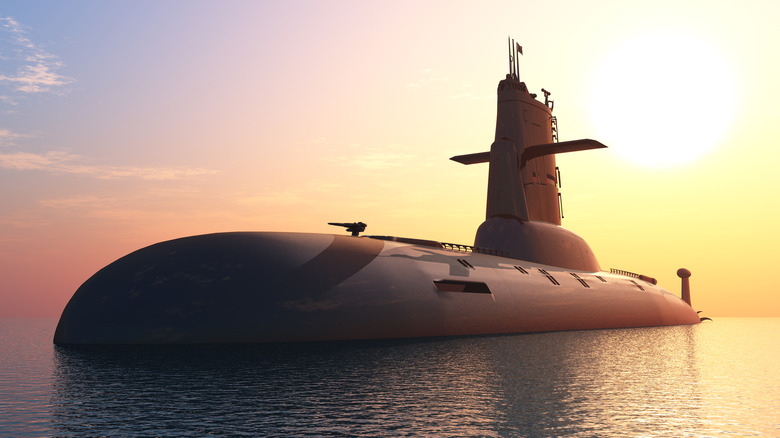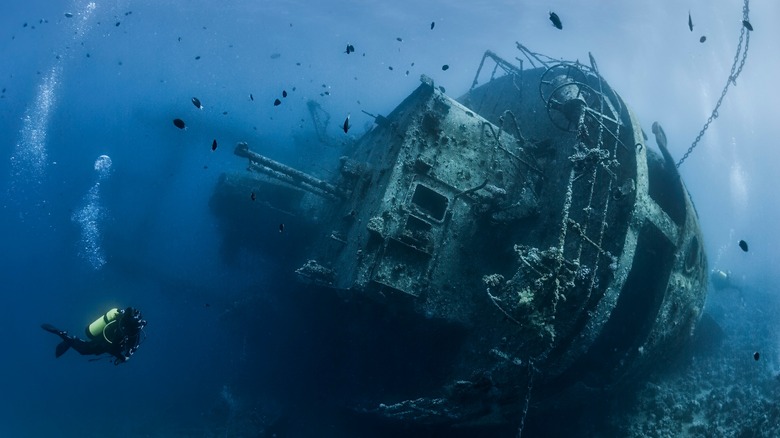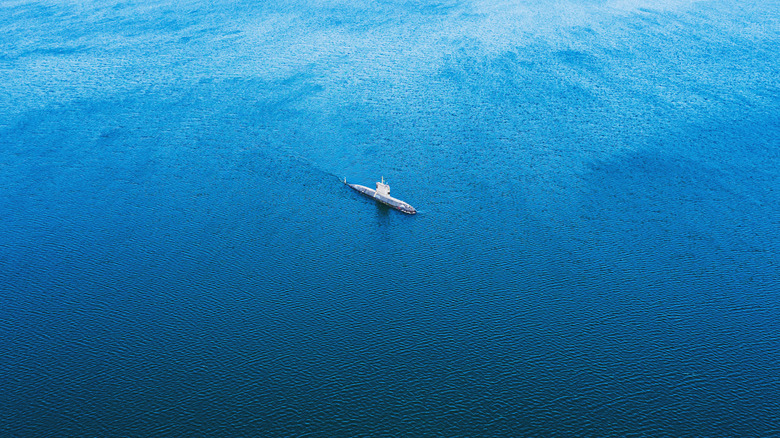Crush Depth: What Happens When A Submarine Dives Too Deep?
The tragic loss of the Titan submersible vessel, designed to explore the Titanic wreck, came as a shock when the debris was discovered. The submersible lost communication with its surface support team midway through its dive down to the 12,500 foot depth at which the gigantic ocean liner rests.
Updates from the Coast Guard and Navy provide context: It seems the submersible experienced catastrophic system failure while en route to the ocean floor, and imploded. NPR and others report that Navy acoustic detection equipment identified what was likely the vessel's implosion on the day of its dive, though it's unconfirmed if that was the exact moment of implosion.
This loss brings up many questions about what happens below the surface of the ocean, and it may even raise concerns over the potential safety of submarine teams who routinely spend elongated stints far below surf. A safe dive depth for modern, Los Angeles-class submarines in the U.S. arsenal to be roughly 1,500 feet — with a maximum descent distance of around 3,000 feet.
However, what happens if a submarine were to continue cruising past these safety thresholds? Put simply, the fate of the Titan submersible isn't a fluke when hull and system failures take place. Implosions and devastation are the norm when it comes to the intense pressure of the deep sea environment.
The crush depth, and the effects of water pressure
Submarine technology is built to withstand the pressure of deep sea travel. For context, standard smartwatches often come packed with a water resistance of roughly five atmospheres of pressure, equating to around 50 meters (or 164 feet). At this depth, the pressure exerted on humans, watches, and submarines is five times greater than at the surface.
Eventually, the pressure becomes unbearable, even for the hull of a vessel designed to traverse the deep. The "crush depth" signifies a depth at which a submarine will hit this critical threshold and be claimed by the deep sea. It should be noted that depth ratings and real world max diving distance aren't always the same, so a submarine could potentially cross its maximum dive depth and return to the surface. However, testing this limit certainly isn't safe, and can easily result in catastrophic loss of life.
Submarines are literally crushed when diving too deep
At crush depth, a submarine experiences implosion. The hull system that allows these vessels to sink down so low loses its ability to withstand the enormous pressure from the environment outside, and the submarine's walls will simply fail to hold the water out any longer.
The ocean will crush the vessel, pouring water into the submarine and destroying everything within it. The crew onboard isn't spared from this wreckage, unfortunately. The force of a submarine being crushed sends equipment, components, and supplies flying throughout the hull, and the onslaught of water provides enough force to incapacitate anyone unlucky enough to experience this outcome.
Escape isn't really possible, either. The rush of water will assuredly kill anyone onboard, but even if someone were to don their scuba gear to make a getaway, the typical maximum diving depth for experienced technical divers is only around 350 feet.


